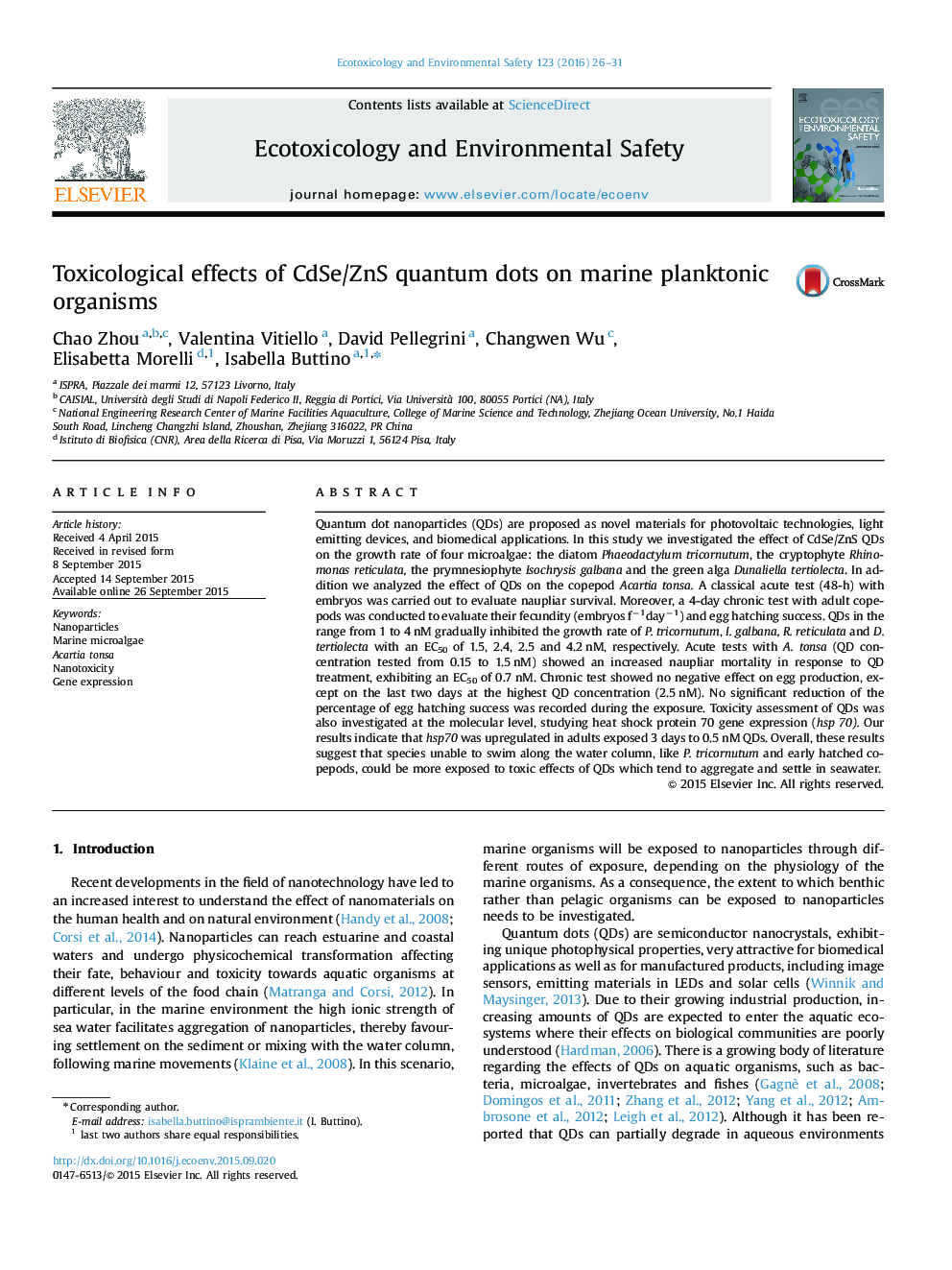| کد مقاله | کد نشریه | سال انتشار | مقاله انگلیسی | نسخه تمام متن |
|---|---|---|---|---|
| 4419495 | 1618940 | 2016 | 6 صفحه PDF | دانلود رایگان |
• QDs inhibited growth of four marine microalgae to a different extent.
• Naupliar mortality of the copepod A. tonsa was the most sensitive end-point.
• Species which settled in laboratory conditions were more sensitive to QDs.
• Low QD concentrations activated a defensive molecular mechanism in A. tonsa.
Quantum dot nanoparticles (QDs) are proposed as novel materials for photovoltaic technologies, light emitting devices, and biomedical applications. In this study we investigated the effect of CdSe/ZnS QDs on the growth rate of four microalgae: the diatom Phaeodactylum tricornutum, the cryptophyte Rhinomonas reticulata, the prymnesiophyte Isochrysis galbana and the green alga Dunaliella tertiolecta. In addition we analyzed the effect of QDs on the copepod Acartia tonsa. A classical acute test (48-h) with embryos was carried out to evaluate naupliar survival. Moreover, a 4-day chronic test with adult copepods was conducted to evaluate their fecundity (embryos f−1day−1) and egg hatching success. QDs in the range from 1 to 4 nM gradually inhibited the growth rate of P. tricornutum, I. galbana, R. reticulata and D. tertiolecta with an EC50 of 1.5, 2.4, 2.5 and 4.2 nM, respectively. Acute tests with A. tonsa (QD concentration tested from 0.15 to 1.5 nM) showed an increased naupliar mortality in response to QD treatment, exhibiting an EC50 of 0.7 nM. Chronic test showed no negative effect on egg production, except on the last two days at the highest QD concentration (2.5 nM). No significant reduction of the percentage of egg hatching success was recorded during the exposure. Toxicity assessment of QDs was also investigated at the molecular level, studying heat shock protein 70 gene expression (hsp 70). Our results indicate that hsp70 was upregulated in adults exposed 3 days to 0.5 nM QDs. Overall, these results suggest that species unable to swim along the water column, like P. tricornutum and early hatched copepods, could be more exposed to toxic effects of QDs which tend to aggregate and settle in seawater.
Journal: Ecotoxicology and Environmental Safety - Volume 123, January 2016, Pages 26–31
